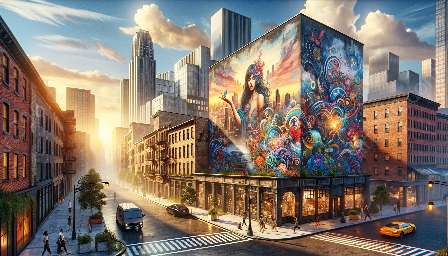Street art has emerged as a significant form of cultural expression, shaping and reflecting the social and political landscape of communities across the world. Its influence extends beyond aesthetics, highlighting important issues and often serving as a platform for marginalized voices. This article aims to explore the multifaceted impact of street art on society, delving into its role in challenging norms, promoting activism, and fostering dialogue.
The Evolution of Street Art
Rooted in the graffiti subculture of the 1970s, street art has evolved from clandestine acts of rebellion to a recognized art form. It has become an integral part of urban landscapes, offering commentary on contemporary issues and engaging with local communities. The evolution of street art reflects the changing dynamics of cultural expression and the diversification of artistic techniques.
Challenging Norms and Igniting Dialogue
One of the compelling aspects of street art lies in its ability to challenge societal norms and provoke critical thinking. By occupying public spaces, street artists disrupt conventional narratives and amplify voices that are often marginalized or suppressed. The use of provocative imagery and powerful messages ignites dialogue and compels viewers to reevaluate their perspectives on various social and political matters.
Advocacy and Activism
Street art has been an influential platform for advocating social and political change. Artists often use their work to address issues such as environmental degradation, human rights violations, and systemic inequality. The visual impact of street art transcends language barriers, effectively conveying messages of resistance and resilience. It has played a pivotal role in mobilizing communities and raising awareness about pressing sociopolitical concerns.
Cultural Preservation and Representation
In many communities, street art serves as a means of preserving and celebrating cultural heritage. It provides a canvas for artists to depict diverse narratives, reclaim public spaces, and express the richness of their cultural identities. Street art has the power to immortalize historical events and traditional customs, contributing to the collective memory of a society and fostering a sense of belonging.
Empowerment and Inclusivity
Through collaborative murals and community projects, street art has become a symbol of empowerment and inclusivity. It creates opportunities for local artists to share their stories and connect with audiences on a personal level. By decentralizing the art-making process, street art fosters a sense of ownership and unity within communities, transcending social divides and nurturing empathy.
Conclusion
Street art not only embellishes the urban landscape but also serves as a powerful instrument for social and political change. Its influence extends beyond artistic expression, manifesting in the empowerment of marginalized communities, the preservation of cultural heritage, and the promotion of activism. Embracing the diversity of voices and narratives, street art contributes to a more inclusive and reflective societal dialogue, inviting individuals to confront and contemplate the complexities of our world.

